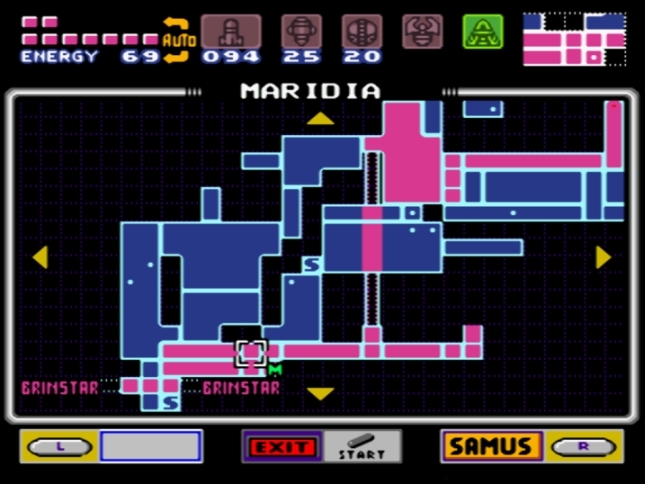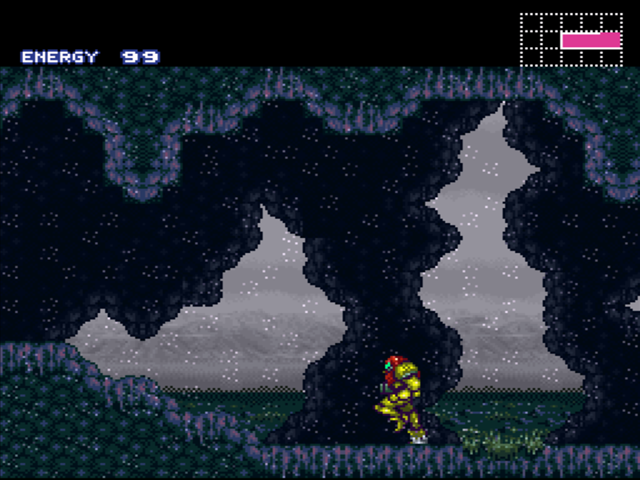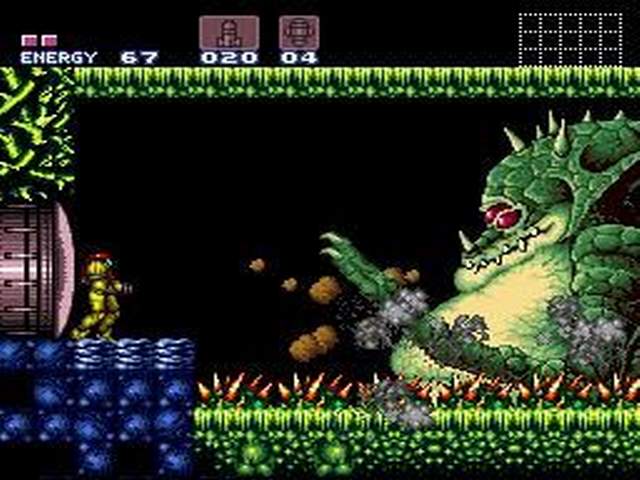Retro Review: Super Metroid (1994)
Written by Ben Vollmer
Where did the term “open world” come from? I recently played through Super Mario World and The Legend of Zelda and thought I knew. Being able to move backward and forward felt like such a novel experience, when to compared to other games released at that time. Then you play Super Metroid and your idea of the inception of open world changes forever.
Just an hour into the game, you find yourself right back where you started. Much like more modern titles, such as Dark Souls, the game expertly crafts its levels so that things open up from the center. There are a handful of different worlds, all with different artistic and enemy-based themes, but they are almost always paired with at least a couple entry points. Unlocking shortcuts and discovering new territory is as satisfactory as anything in the game. This is good, because the entire game is centered around navigation and discovery.

There isn’t a lot of linear progression in the game, either. Some worlds can’t be accessed without specific items, but the world itself is largely explorable in whatever capacity you’d like. The items are a tool for discovery as often as they are for destruction. Given that almost none of the items are actually mandatory (there are a couple that are required to “blow up” doors), it’s really exciting when you come across something new. More than half of the items you find are just boosters, allowing for additional room for missiles or extra health, but the dozen or so that aren’t are extremely versatile. With them, Samus (our protagonist) feels incredibly powerful. Without them, she feels impotent and forgettable.
The use of items as a means for additional discovery is odd design choice, however. The game likes to stow away items behind hidden paths and holes in the surrounding area. Because your tools are a necessity to reach some of these hidden areas, you often find yourself casually blowing things up in hopes that a pathway will reveal itself. It does so just often enough that you wind up checking every room, every crevice and every suspicious piece of surface the game throws at you. The game would have benefited from a tool that notified you when close to a hidden item instead of haphazardly guessing at which tool you need to use to locate a secret, if one even exists.

Thankfully, the game does have a tool that gives you a sort of “x-ray vision”, allowing you to discover pathways and secrets that way. It’s slow and cumbersome, but it beats wasting the ammo of your weapons and tools. It’s pretty rare that the game will hide anything that’s overtly important to finishing the game, so it’s advisable that you focus on the more obvious layout and occasionally take a shot at cracking up a secret area, rather than focusing on it.
When Samus is all tooled up, she feels like a God. The game does everything it can without making the game easy to have you feel powerful, even utilizing the difficulty of earlier areas and having you return to them for easy destruction. Given that the game has an excellent save system, with save rooms that work both as checkpoints and a point of relief, you never have to replay entire chunks of the game to get back to where you were. This allows you to explore pretty freely, taking advantage of your new tools to see if it will help you unlock a new area or kill a previously invincible foe.
The boss fights aren’t a cakewalk, but most of them should only take a few tries at most. The worst thing that can be said about them is that they often require the spamming of a single attack over and over, but doing so can get incredibly complicated when also trying to avoid their attacks. It’s the combination of movement and aiming that is so satisfactory, especially when a lot of the boss fights have the ability to move just as quickly (or quicker) than you do.

One of the most underplayed aspects of Super Metroid is its platforming. It’s unfortunate how infrequently it’s put to use, but the game’s movement is incredibly fluid and controlled. It’s not too dissimilar to Mega Man, though I’d argue that the former does it a bit better due to variety of weapons amounting to more than similarly-fired projectiles. There are a few moments where the game has you focus on getting from one spot to another (and one heart-pounding race against time), but it’s a pretty rare occurrence. The best moments lie in the times where you can utilize your tools to platform. For instance, you eventually get a suit upgrade that allows you to freeze enemies mid-air. Once frozen, you can hop from one to the next, as long as you don’t accidentally shatter them to pieces.
There’s a few things that the game does really well. Beyond the level design and solid controls, it also gives your farmable enemies that keep you from running out of necessary items such as bombs and health. They tend to be expertly placed before boss fights or long stretches of difficulty, making it so you’ll never have a “bad” save state that leaves you with an impossible hill to climb. The 1994 title also sports an excellent, and fitting, sombre score that’s as immersive as it is engaging . The visuals aren’t anything to write home about, especially when the older Super Mario World feels so clean in comparison, but they are fittingly drab and murky.
Super Metroid is a game filled with ambition and new ideas. Those new ideas are what make the game fascinating, but not necessarily what it does best. Outside of the choice level design, the focus on discovery often feels forced and ponderous. Many of the items aren’t worth the headache, and the ones that are tend to be much more obvious, anyway. What it doesn’t do well, it more than makes up for in terms of innovation and style. Super Metroid is a game that deserves a play, regardless of what kind of game you typically enjoy.
Score: 8.0
Price: $7.99
Virtual Console: Yes
Worth the Price? Yes
*Ben reviewed this game from the Nintendo Wii U “Virtual Console”.
